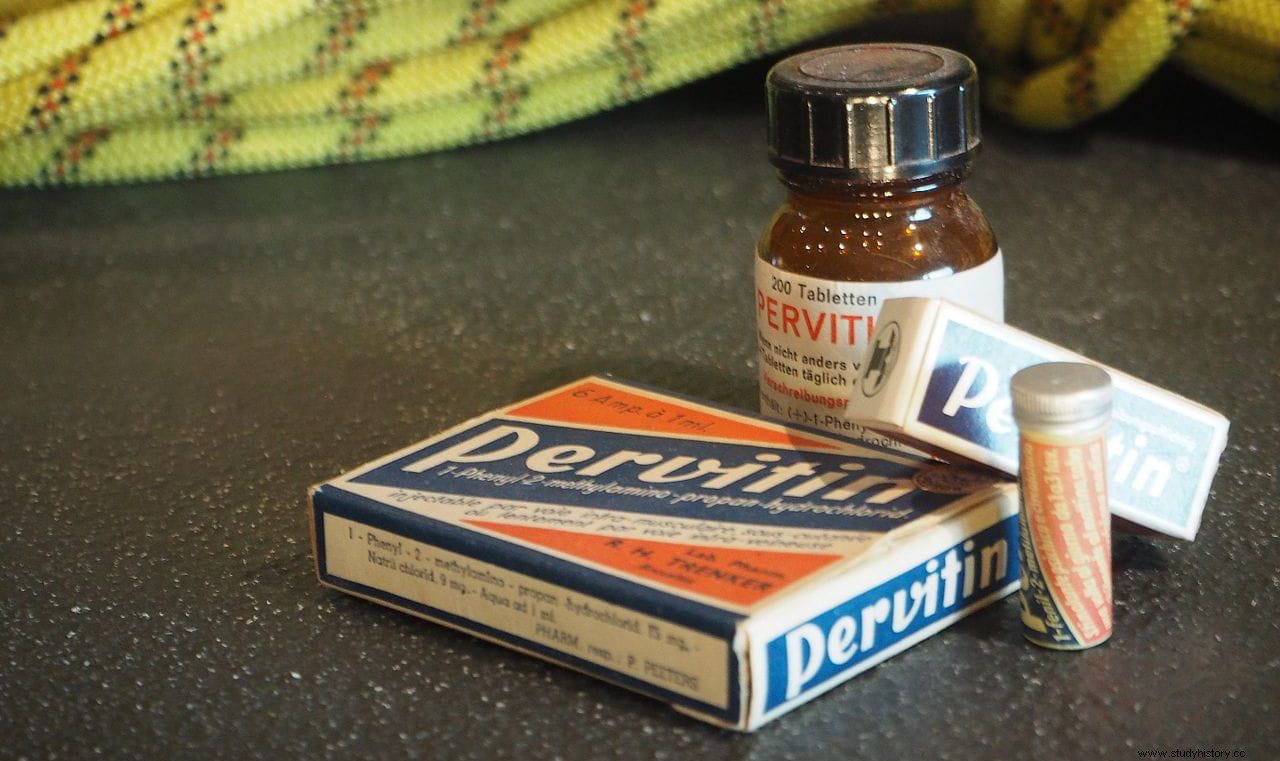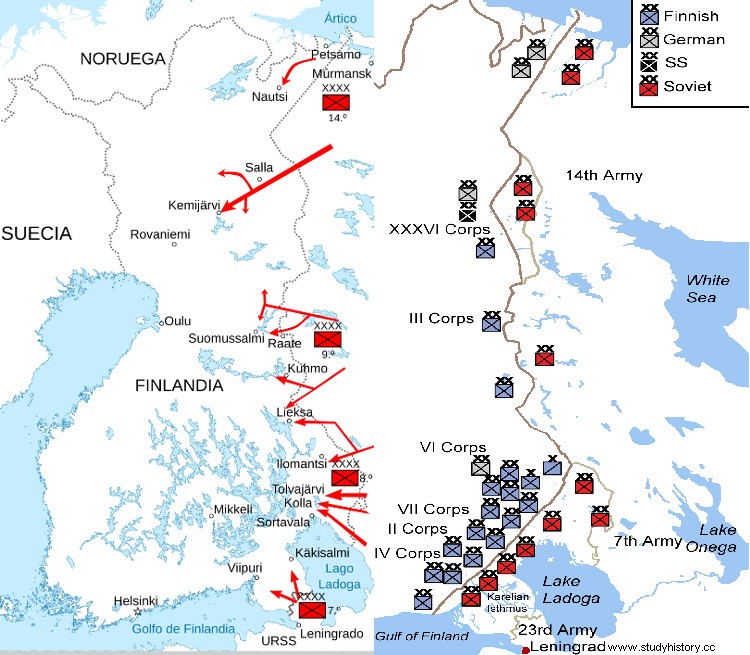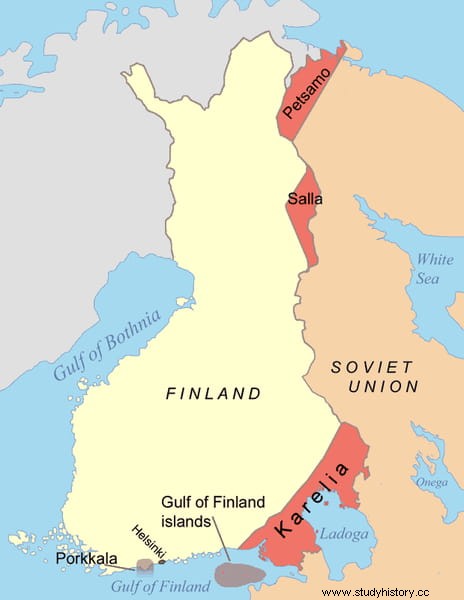Some time ago we dedicated an article to Pervitin, a drug that soldiers used during World War II for its stimulating and euphoric effect, basically composed of methamphetamine. Commonly used in the Wehrmacht but also in other armies (Allies included), as such or under other commercial names, Pervitin helped to cope with the harshness of life on the front, just like tobacco or alcohol. But it had its risks, as a Finnish fighter named Aimo Koivunen suffered in the flesh in 1944.
As we said, Pervitin was not the only drug supplied to the troops; There was also Isophan and some not manufactured under legal license, in the case of cocaine or morphine. But the first, manufactured by the pharmaceutical company Temmler and distributed under the acronym OBM, were given by prescription when they were considered necessary to stay awake and with the recommended dose of two tablets maximum. In addition, they were drugs of great antidepressant efficacy and to suppress hunger - for both things they were used in the postwar period.-
But the reason for being admitted was, apart from helping not to fall asleep and overcome pain, that they could save lives in specific situations; this was demonstrated in 1942, when an exhausted German contingent pursued by Soviet forces overcame the crisis -and the expected death- thanks to the Pervitin. Consequently, nobody considered those substances harmful and they used to be compared to coffee, hence some thirty-five million tablets were dispensed during the war; And not just among soldiers, as Rommel is known to have been a regular user.

That was the context of the episode experienced by Aimo Allan Koivunen in the spring of 1944. Born on October 17, 1917 into a family of five children in Alastaro, a small town in southwestern Finland, he was a witness to the ups and downs wars that shook the country in 1939. One was the so-called Winter War, arising from the invasion that the Soviet Union began on November 30 with the aim of regaining sovereignty over Finnish territory that it had lost in 1917, during the revolution. The Finns managed to maintain their independence, although at the cost of losing ten percent of their territory and suffering significant economic deterioration.
Decisive factor in the course of that contest was the formation of jägers , Germanophile volunteers who fought in World War I for the German Empire and then, at the outbreak of the Finnish Civil War in 1918, joined the Suojeluskunta o White Guard, contributing to the final victory of the valkoiset side (white, conservative) against the punaiset (red, social democrat). The jägers , deeply nationalist, claimed a Greater Finland by making armed incursions into the Soviet Union that forced them to sign a non-aggression pact.
Although that agreement was maintained until the outbreak of the Winter War, it was tenuous because the Karelian Isthmus -the border- was too close to Leningrad and constituted a probable passage for an invasion, hence Moscow demanded its surrender and, faced with the negative, hostilities will break out. The conflict lasted a hundred days, but overlapped with the German invasion of Poland and the beginning of World War II, which in those latitudes was known as the Continuation War. As a result of all of the above, Finland aligned itself with the Axis.

Thus, on March 15, 1944, Aimo Koivunen was assigned to a patrol of skiers whose mission was to carry out a reconnaissance of the surroundings of Kandalakcha (Kantalahti, in Finnish), a Russian city on the Kola Peninsula, at the mouth of the Niva River, over which a German-Finnish offensive had been unleashed in 1941 for control of its strategic railway. For three days the mission was uneventful, but on March 18 the patrol was discovered.
The Soviets made a surprise attack on skiers on Kaitatunturi Hill, trying to surround them. The Finns were able to break through the encirclement and flee through the snow, but closely followed, with a constant exchange of fire. Koivunen was isolated from his companions and, although he managed to keep his distance from his pursuers, little by little the fatigue was taking its toll on him. He eventually reached a state of exhaustion, presenting him with two options:either give up and give up, which had a good chance of being killed, or resort to Pervitin.
It was not a regular user, but it was not a normal situation either. As he kept sliding through the snow on his skis, he tried to take out a tablet. He could not. Keeping his balance, the speed of the escape, the thick gloves and the bullets flying around him did not constitute a combination of factors that facilitated the shot, so, without stopping, he opened the can and poured its contents into one hand and then took it with him. to the mouth.
Each container had about thirty pills and, although it is reasonable to imagine that Koivunen could not ingest them all, that some would fall, the fact is that a higher dose than recommended was taken; very superior. Of course, the drug did its job, and the young soldier immediately regained his strength, picked up his pace, and left the Soviet soldiers behind. Of course, with such an amount of amphetamines in the body, it did not take long for side effects to appear that were about to do the job that their pursuers could not.

The state of euphoria became delirium, his vision blurred and everything began to spin until he lost consciousness. He woke up in the morning, half buried in the snow (which, ironically, helped to camouflage him), but still under the effects of the overdose:tremors, temporary hallucinations, tachycardia, general malaise... Over the following days he alternated phases of momentum with others of decay and, despite the sleep that gripped him, he could not sleep, so the exhaustion affected him more and more.
All this was combined with other adverse factors, such as being far from their lines without food and enduring extreme temperatures, up to twenty degrees below zero. That situation lasted two weeks, during which he had to dodge new enemy patrols and was injured by a mine that he stepped on and whose explosion was surely muffled by the snow (or perhaps it was defective). Unable to go on, he dug a ditch to hide inside and rest. He stayed in it for seven days, feeding on berries and a Siberian jay (a corvid bird) that he managed to hunt, although he had to consume it raw.
Finally, he was found by a Finnish patrol who took him to a field hospital. The doctors had to treat him conscientiously for various reasons. First, because he had lost so much weight that his scale only showed forty-three kilos; second, because his heart rate exceeded two hundred beats per minute. In other words, the overdose was still latent and, in fact, it would take some time to completely disappear with the right treatment. This must have been correct, as Aimo Koivunen lived until 1989.
The really curious thing, apart from the fact that it was the first documented case of amphetamine overdose in combat, is that the decision he made can be considered correct. The amount ingested was brutal, even excessive, but the truth is that it fulfilled its function of saving his life:when those soldiers found him, he was more than four hundred kilometers from Kandalakcha, the point where his flight began.
